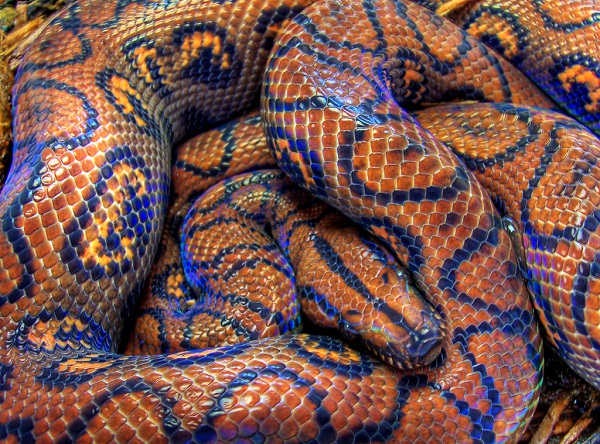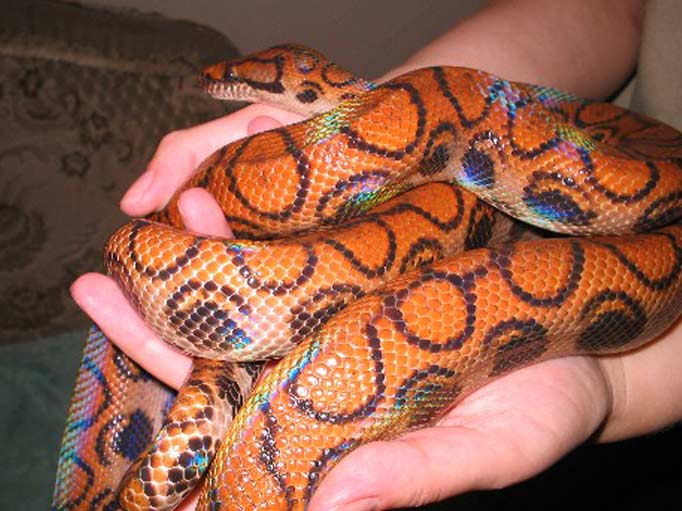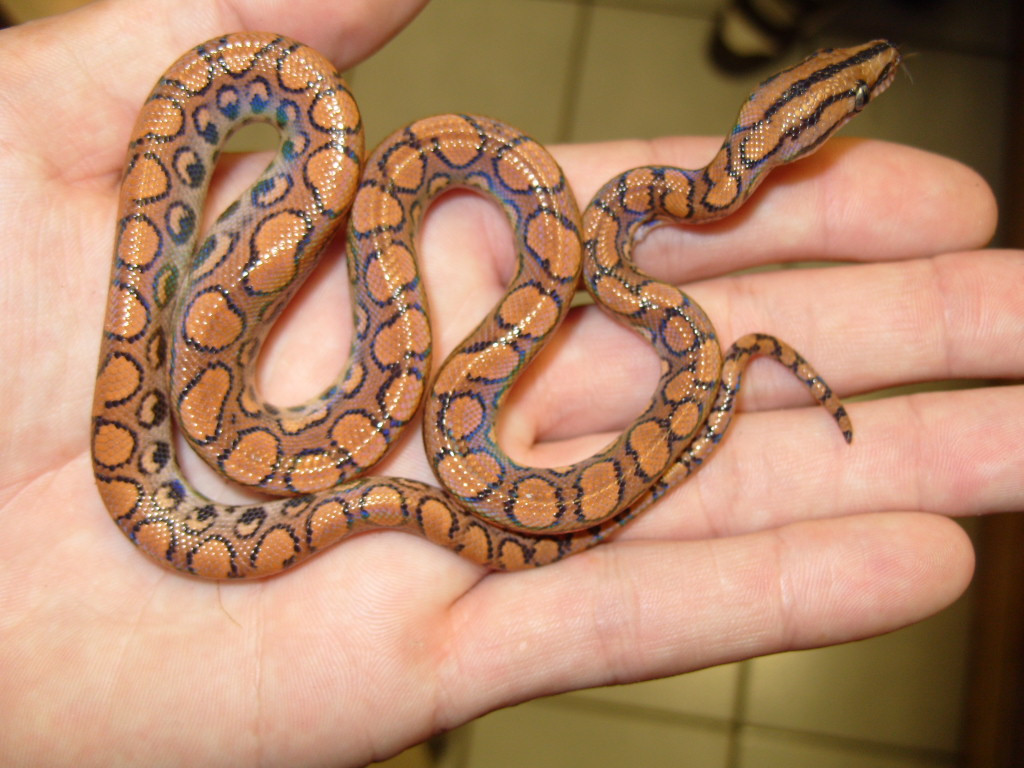

Many things work as hide spots: wooden or Rubbermaid boxes with holes in the side, pieces of broken pottery, cork bark, slate propped on bricks, and even cinder blocks laid on their sides. If the cage is large or shared by multiple animals, two or three hiding spots are included. In the warm end of the cage, at least one hiding spot is provided. A water dish is placed in the cool end of the cage away from the heat source. Regardless of the size of the cage or the age of the snake, I always arrange the inside the same way. A 100-gallon aquarium will also work for adult rainbow boas. These cages are used for breeding groups (two or more animals). I also have a few larger enclosures that measure 48 inches long by 24 inches wide by 21 inches tall. This size is appropriate for housing one animal or a breeding pair. Adult cages are a minimum of 36 inches long by 24 inches wide by 21 inches tall. They are lined on the inside with Formica brand laminate to stand up to wear and tear from the snakes, moisture and cleaning. Once the animals are 4 to 6 feet long, I move them into their adult enclosures. Brazilian rainbow boas that are 2 feet long can also be comfortably kept in 20- to 30-gallon aquariums. I use sweaterboxes 23 inches long by 16 inches wide by 6 inches tall. Once the snakes are approximately 2 feet long, I move them to larger plastic sweaterboxes. The temperature range throughout a too-large cage becomes too wide for the animal to thermoregulate. It has been my experience that anything larger than this is just too big for a small snake. Appropriate floor dimensions for baby Brazilian rainbow boas range from plastic shoeboxes measuring roughly 12 inches long by 6 inches wide by 4 inches tall to 10-gallon glass aquariums measuring 20 inches long by 10 inches wide by 13 inches tall. Whatever you use, it should be of appropriate size and escapeproof. Plastic shoeboxes of various sizes, glass aquariums and custom-built wooden habitats all suffice. I have kept them in many types of enclosures over the years. Caging Particularsīrazilian rainbow boas thrive in captivity and make excellent pets as long as their requirements are met. The author’s Brazilian rainbow boa enclosures in this photo each measure 36 inches long by 24 inches wide by 21 inches tall. Once such an area is found, they patiently wait for their next meal. Rather than actively hunting down their prey, they probably seek out high-rodent-traffic areas. Once they have found a suitable location, they assume a sit-and-wait position with their heads extended from their shelters. They may be found searching for a drink or for a new daytime hiding spot. They don’t possess any pattern on their ventral surface because it is never exposed and therefore doesn’t need to blend in.īrazilian rainbow boas are nocturnal, and they often become active an hour or two after sundown.


This busy pattern and bold coloration serve to break up the outline of their bodies as they camouflage themselves among debris on the forest floor. These markings contrast their stark-white ventral surfaces, and they are further enhanced by the iridescence radiating from their scales, which reflect hues of blue, green and purple thanks to chemicals called “purines” located in cells of the epidermis. Usually three distinct black stripes run along their heads, and black circles containing yellow to orange to fiery-red crescent-shaped markings run along each side of the animal’s body from head to tail.

Their color ranges from orange to deep-red with orange to red saddles running down their backs. They never get so big that one person can’t handle them alone. They are impressive animals but not giant snakes. Large females can grow to 6 to 7 feet and weigh up to 9 pounds. Humidity is fairly constant at 60 to 70 percent.īrazilian rainbows are a popular subspecies because of their outstanding appearance. A steady temperature between 73 and 90 degrees Fahrenheit is expected year round, and annual rainfall varies from 58.5 to 136.5 inches depending on the particular location. They inhabit tropical and subtropical broad-leaved forests described as hot and wet. Its natural range includes the Amazon River Basin from Peru and Brazil to Colombia and northeast to Suriname. cenchria cenchria) is the most commonly kept subspecies in captivity. Nine recognized subspecies of Epicrates cenchria are found from southern Mexico through Central America and throughout most of South America. Outlined in black, saddles contain yellow to orange to fiery-red crescent-shaped markings.


 0 kommentar(er)
0 kommentar(er)
